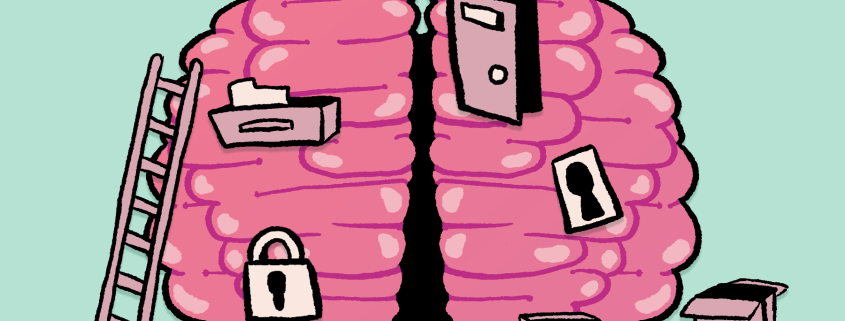Study explains robust nature of negative memories

More than 10 years of experiments and observations of glowing fish culminated in a discovery by researchers at the Dornsife College of Letters, Arts and Sciences and the Viterbi School of Engineering that inches the scientific world closer to understanding why unpleasant memories stick around so vividly in human brains. Starting from “scratch,” the team became the first to train and study synapses in live zebrafish.
To create memories to measure, researchers used an “unprecedented” method of training 12-day-old fish to associate a light with an infrared laser to mimic heat, which fish would swim away from to avoid. After five hours of training, the team observed and captured significant changes in the zebrafish’s brains.
“This is the first time we will be able to see something in a very large brain region in vivo and during training,” said Zhuowei Du, a postdoctoral researcher who worked on the study.
Researchers discovered that when zebrafish form fear memories, there is a dramatic increase in the number of synapses in some, while a decrease in other regions of the brain. The finding, to some extent, overturned the commonly accepted theory that memory causes the strength of existing synapses to change, as researchers found no significant changes in the intensity of synaptic labeling.
“What was surprising was that we did not see, necessarily, a change in the size of the synapses, which would correspond to the synapse strength, and that sort of … is what the dogma is in the field,” said Donald Arnold, a professor of biological sciences and biomedical engineering and who co-led the research study.
New methods and tools, including a new type of cell labeling and a custom-made microscope, played a vital role in the study, allowing researchers to observe the strength and location of synapses before and after fear learning occurred in the fish.
To visualize the structural changes occurring in zebrafish brains, Arnold’s team created new methods that altered the DNA of the fish so that the synapse, marked with a fluorescent protein, would glow when scanned by a laser.
“The idea is that the fluorescent molecule is stuck,” Arnold said. “This allows you to visualize it through fluorescence microscopy.”
Researchers utilized a specialized microscope developed at USC to scan the fish’s brains and observe the synaptic changes without killing them. Scott Fraser, the provost professor of biological sciences and biomedical engineering, led the development of the microscope in his laboratory.
“Fraser’s lab [is] some of the world’s authorities on what’s known as light sheet or selective plane illumination microscopy,” Arnold said.
Previously, Fraser’s microscope has only been used to look at objects the size of a cell, which is much larger than a synapse. As such, Thai Truong, an assistant professor of biological sciences, modified and optimized the microscope to better capture the image of synaptic alterations of living zebrafish’s brains by enhancing the microscope’s resolution.
“We pushed the sensitivity this way and increased the laser power without damaging the sample,” Truong said.
Truong also synchronized the microscope’s shutter speed with the heart rate of the brain in order to capture clear images.
Researchers, led by Carl Kesselman, a professor of industrial and systems engineering, computer science and preventive medicine, also developed a data management system to help the team process the massive amount of data collected from the microscope.
“We were making 3D images of the animals’ brains … but we also had to associate this data with behavioral data because we were inducing the animals to make a memory,” Arnold said. “It was really quite a complex problem from a data management point of view.”
To combine the miscellaneous types of data and generate the fluorescent images of the zebrafish brain, Kessleman’s team developed a unique algorithm that wipes out the noise and lighting that impaired the scanned image.
“There’s miscellaneous garbage floating around in there that glows at the same wavelength that you’re looking for,” Kesselman said. “So, we would kind of go through and clean that up.”
As such, precluding the distracting light signals, researchers combined myriad data with behavioral data to compute the density of synapses, thus analyzing the brain activities while learning and memorizing.
Although the study proposed a primitive theory of memory formation, its classical conditioning associated with aversive stimulus has been linked to the study of PTSD.
“When someone has a traumatic event, there will be some sort of neural sensory experience that goes along with that event,” Arnold said. “Synapses that proliferated or disappeared could be an indication of why these particular memories are so robust.”
Concurrently, Arnold’s team started developing technologies that could erase new synapses formed by memory, which could possibly contribute to the treatment of PTSD.
“That would be down the road,” Arnold said. “It would certainly indicate that that might be a way that [treatment for PTSD] could be done.”

